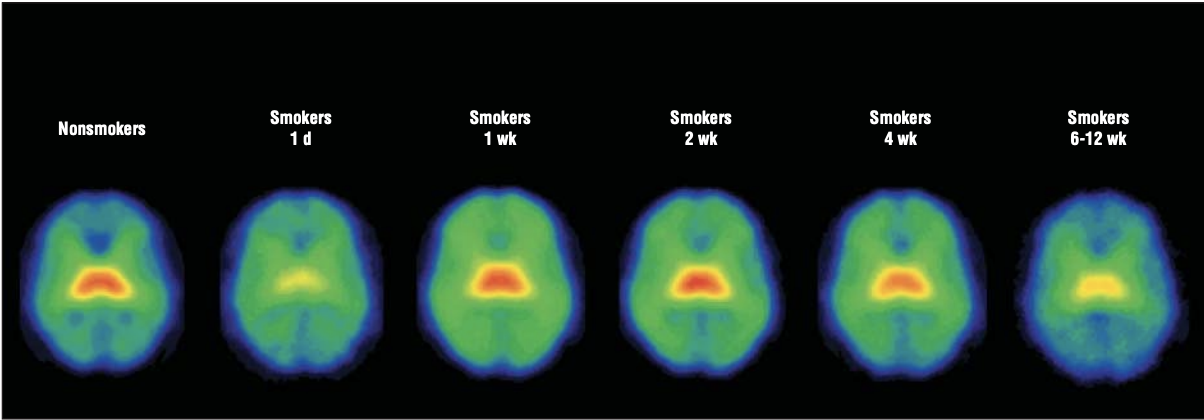The Importance of the First Week of Quitting Smoking
Just one week of being smoke-free increases your patients’ chances of quitting smoking by 9x.
What are the challenges of the first week?
As their physician, you can help patients get through this crucial time period by:
- Offering Quick Counselling to your patients
- Using different strategies to support your patients
Referring patients to smoking cessation resources
Why is the first week so critical?
The risk of relapse is shown to be highest during the first 8 days after a quit attempt3
Getting patients through the first week increases their chances of quitting by 9X4
What makes the first week so difficult?
Difficulty quitting may be due to nicotinic receptor upregulation. Using SPECT imaging, Cosgrove et al. showed that abstinent smokers (vs. non-smokers) had significant β2-nicotinic acetylcholine receptor (β2-nAChR) upregulation in multiple brain regions that persisted 1 month after abstinence. This was correlated with a greater urge to smoke. Receptor levels only returned to normal by 6-12 weeks.5
Availability of the nicotinic acetylcholine receptor containing the β2 subunit: nonsmokers vs. tobacco smokers

From Cosgrove KP, et al.
Strategies to support your patients during the crucial first week and beyond
| REDUCE TO QUIT® | Consider REDUCE TO QUIT® for patients who want to quit, but are not ready to quit entirely
|
|---|---|
| NRT | Offer NRT to all patients - even those not ready to quit:
|
| Proven Strategies | Offer proven strategies to prevent and manage relapse during the first week |
| Practical Tips | Provide practical tips to help them get through the first week:
|
Remember: your role is vital
NRT + strategic advice from an HCP was shown to increase a smoker’s quitting success by 4X vs. going cold turkey.11
Download these strategies to support your patients during the crucial first week
Learn about counselling techniques
See the benefits of combination therapy
